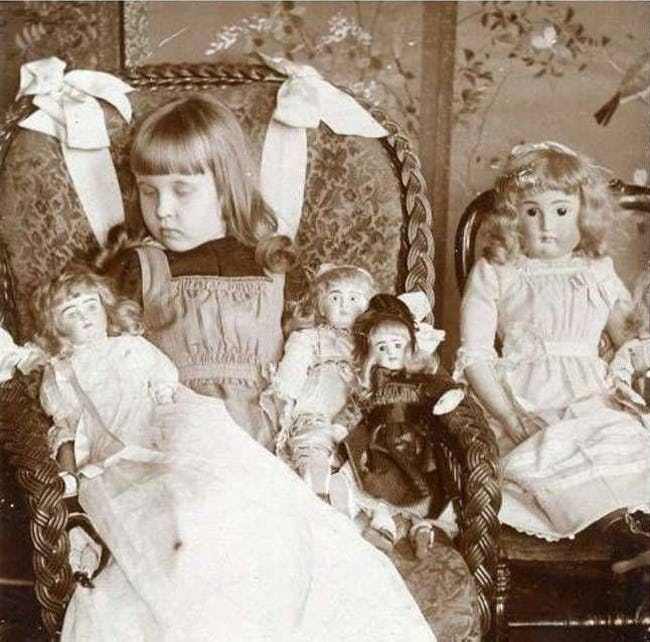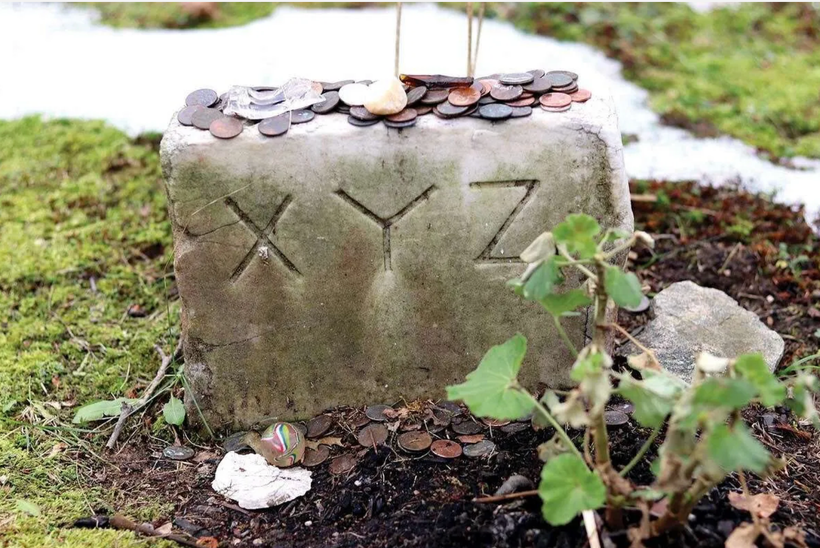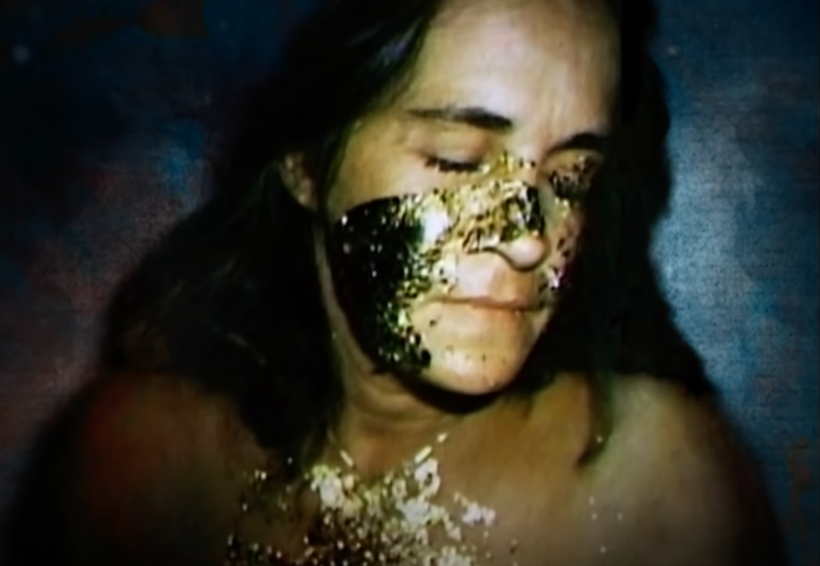After experiencing the death of a loved one, especially those who pass away in the midst of infancy or youth, our mourning practises may include collecting mementos, old photographs, writing diaries. And of course, you might make a full-sized effigy of the deceased to place in their room.
In the 19thcentury, death played far a greater role in everyday life. Children and adults were frequently and openly exposed to death and deceased loved ones. As we know through examples of hair jewellery, post-mortem photography and death masks, methods of remembrance and memorialisation could be far more direct and graphic. Hair bracelets and wax heads aside, Victorian mourning dolls are one of the more overlooked element of the Victorian grief process.
By the tail end of the 19thcentury, it was customary for the family of a deceased child to leave a doll at the gravesite. Of course, leaving toys at the grave of a child remains familiar sight, but ‘mourning dolls’ were no shop-bought playthings.
The life of the Mourning Doll began at the funeral/wake of the infant, where a wax likeness was made and presented in the child’s own clothes. Often, the doll’s realism was enhanced by wearing cuttings of the child’s own hair. Frequently pictured lying with the deceased on their deathbed, they were also displayed in miniature coffins as an idealised image of peaceful death. Considering that many infant mortalities were caused by disfiguring and draining illnesses such as smallpox, scarlet fever, tuberculosis and diphtheria, the doll offered an idealised reality of their loss. While their child may have departed gaunt and bloody, the wax effigy would look as though it had simply closed its eyes and gone to sleep.
Subsequently, these peaceful dolls were often sculpted with flat backs and heads to ease placement in frames, coffins and at the graveside. As the years passed, tastes changes and weather and vandalism played their part, many of these dolls were left and scattered with the years.

Grave decoration, aside from the obvious towering monuments, was commonplace in the Victorian era. Ceramic hands, books, flowers and wreaths were often placed on graves from the 19thcentury and beyond. These, like most Victorian methods of memorialisation, were rich with symbolism. Many French cemeteries popularised beaded ‘Immortelles’, which were beautifully beaded wreaths which slowly disintegrated into piles of glistening beads over time.
However, those that survive today had very different treatments; they were not left open to the elements, but were often kept at home, displayed in the bed of the deceased and cared for and re-dressed as though they were the deceased. To mimic the feel of a real child, these dolls were weighted with sand and heavy cloth. In some ways, these wax infants seem not unlike the popular ‘re-born’ dolls of today, where hyper-realistic silicon babies are collected by doll enthusiasts and grieving parents alike.
Those that remain today were preserved in large glass boxes and, typically, depict a child between 0-3 years. Older children tend to have been depicted merely from the shoulders up – Which is understandable from a cost and size perspective! A wax baby might be comforting; a six foot wax teenager is the stuff of nightmares.

Wax likenesses weren’t the only death-related dolls associated with Victorian children. In life, many little girls were presented with so-called ‘Death Kits’, which included a doll and miniature coffin. In play, the child would then ‘practice dressing the doll, laying it out for visitation, placing it in the coffin, and facilitating a funeral. She might also be expected to practise attending to the grief of the doll’s mourners.’ So says The Order of the Good Death’s Louise Hung.
These dolls were ideal primers for young women who, should they survive to adulthood, would almost certainly be called upon to care for their own dead.
As mortality rates decreased, tastes changed and wartime reduced the popularity of excessive or overly-materialistic mourning, wax dolls lost their popularity. Today, many of us find realistic likenesses unnerving or macabre, but feel compelled to decorate graves with cherubs and photographic likenesses. The days of the wax child may be over, but I’d keep an eye on the ceramic toddler…
Sources
https://victoriantraditions.blogspot.com/2016/04/wax-dolls-montanari-and-pierotti-dolls.html
http://www.orderofthegooddeath.com/cabinet-curiosities-victorian-death-dolls
http://www.inherited-values.com/2016/10/the-lovely-disturbing-the-history-of-wax-dolls/
https://www.goodreads.com/author/show/4814519.kirsty_stonell_walker/blog?page=13






Leave a comment